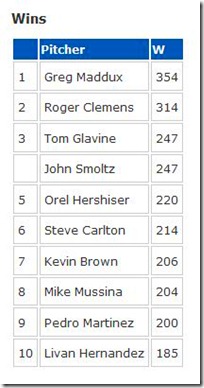With stats provided by our commissioner, I just updated the all-time leaderboards for the 35-year old Illowa APBA League. I did career and single season top ten lists for almost all of the hitting and pitching categories. I even threw in an all-time worst page for kicks (that’s a fun little curiosity I seem to have). It was a fun project for me pretending to be a Stats Bureau for our league. Every year I try to make improvements to the process and bring a little more to the table.
If you’re interested in the results, I wrote up a little summary for the league with links to the lists.
Working through the process, it did make me think though. Why is it that historical stats for an APBA league are so important? ARE they important? The managers in our league seem to appreciate it. What prompts us in long running leagues to search our history and archive it when it seems so trivial in the wide scheme of things?
Some ideas why they might be so important:
Historical Archives
Quite simply, so the stats are there. If you as a league, have played for years and years, you want a record of it. What’s the point of playing a full season if you are only going to throw away the data?
Historical Context
Once you have a database of historical league statistics, put it into perspective. With the right kind of software (we use MS Excel but any good database or spreadsheet software will do), you can manipulate it to your wishes. Sort by stat categories, filter by teams or seasons (or even better, both). By doing this, you can give your league a working register and find a team from a certain and play “remember when?”.
Historical Comparison
Comparison among Major League Baseball player across different eras using the common statistics has been found to be a tad unfair. That’s probably true with APBA leagues as well especially when your league spans 35 years like ours does. But it’s human nature to do it anyway. Questions like, ‘who had the highest batting average in a season?’. You just want to know. A bit of interesting IAL trivia: Roy Oswalt has a career 3.50 ERA and places 4 th all-time. No other pitcher in our top ten comes from this century. To me, that makes his placing the most unique.
th all-time. No other pitcher in our top ten comes from this century. To me, that makes his placing the most unique.
Having a historical archive of stats will uncover stories you never knew were there. Another IAL example: For years, Greg Maddux and Roger Clemens were neck and neck in major stat categories most notably wins. Clemens had the nod in strikeouts of course. The two were the dominant active pitchers in the league and it almost seemed we would check in to see who had the lead every month. Clemens retired before Maddux so he was eclipsed in wins but it was a fantastic race to watch that we would not have known existed without a stats archive.
PS As you can see by the graphic at right, they both ended up with over 300 wins for their IAL career.
Historical “History”
With the stats in the book so to speak, the memories come to life. When I finished my project and notified the rest of the league, I received a few emails from managers. Comments about those special seasons when their player broke the league record. Not all of them good either… “Yeah, I remember when Preston Wilson hit .165”. For me, it was Mark McGwire and his 70 homeruns to break the record in the last at-bat of the season only for him to break it the next season IN THE LAST AT-BAT.
The point of this article is, APBA baseball stats should serve their purpose as they do for real life baseball. They should frame the game you play, memorialize it (I mean that in a literal sense not necessarily in a sentimental way) and preserve it. I know I receive a lot of enjoyment out of browsing and working with our stat archives however trivial they may be outside our ten person league.
Comments?




I keep stats on my team in our league in great detail. Recently I have been using it to look back and see what type of cards produced, that way I can use that when drafting. I wanted to find what about their cards lead to my teams runs per game that year. (I found that # ways-on with bases empty has been the best indicator so far) That would be interesting to look at your 35 yrs of data and see how things correlated